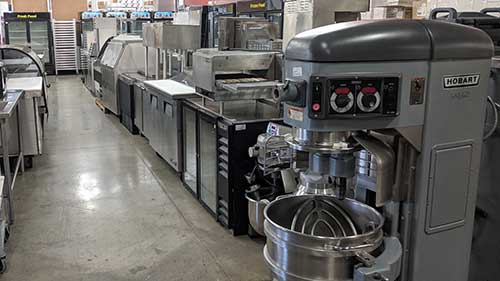
Charles R. Goulding and Preeti Sulibhavi examine 3D printing applications in reconditioned restaurant equipment.
Reconditioned commercial kitchen equipment has always been a big business and it’s about to get a lot bigger. The restaurant business has always been competitive and many of the restaurants shattered during the coronavirus pandemic are thinly capitalized and may never reopen.
Used kitchen equipment has always been a practical option because new kitchen equipment is expensive, and while restaurants are always going out of business, refurbished equipment provides a good option considering it normally has a long remaining useful life.
In recent years, more OEM kitchen equipment manufacturers have utilized 3D printing to make component kitchen equipment parts. Leading OEM kitchen equipment manufacturers include Dover/Hill Phoenix, Welbilt, Illinois Tool Workers, and Middleby, all of which have varying levels of 3D printing expertise.
Properly refurbished kitchen equipment has to clear a comprehensive qualify checklist, including replacement of ready-wear items that often need to be replaced.
This includes many items suitable for 3D printing including gaskets and seals, pumps and fans, plastic refrigerator racking, trays, ice cube holders, and storage bins. In addition, 3D printing is suitable for parts such as stove control buttons, burners, and grills as well.
New and improved products and processes to recondition kitchen equipment will often be R&D tax credit eligible.
The Research & Development Tax Credi
Enacted in 1981, the now permanent Federal Research and Development (R&D) Tax Credit allows a credit that typically ranges from 4%-7% of eligible spending for new and improved products and processes. Qualified research must meet the following four criteria:
- Must be technological in nature
- Must be a component of the taxpayer’s business
- Must represent R&D in the experimental sense and generally includes all such costs related to the development or improvement of a product or process
- Must eliminate uncertainty through a process of experimentation that considers one or more alternatives
Eligible costs include US employee wages, cost of supplies consumed in the R&D process, cost of pre-production testing, US contract research expenses, and certain costs associated with developing a patent.
On December 18, 2015, President Obama signed the PATH Act, making the R&D Tax Credit permanent. Beginning in 2016, the R&D credit has been used to offset Alternative Minimum Tax for companies with revenue below $50MM, and startup businesses can obtain up to $250,000 per year in cash rebates applied directly toward payroll taxes.
Recipe for Success
As many of you who have tried your hands at cooking well know, cooking involves steps, processes, and good kitchen equipment and appliances. For restaurants, the refurbished market is a valuable resource that 3D printing can tap into. By doing so, this will be a recipe for success.
